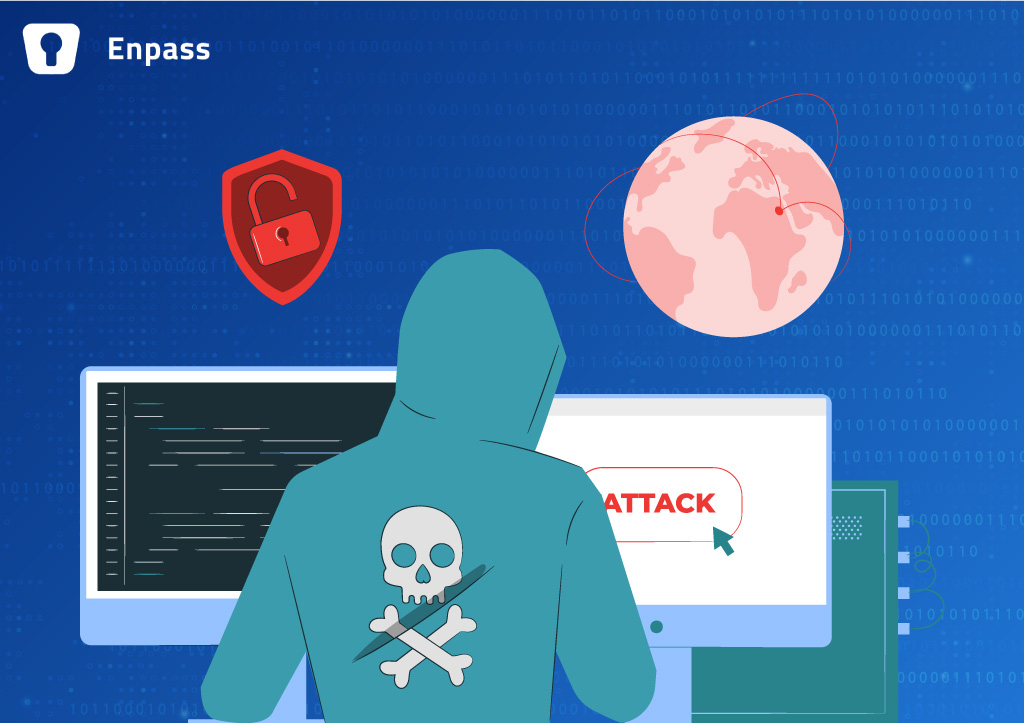
The threat of hackers breaching a firm’s data looms over everyone. With an ever-evolving digital landscape, one must take the necessary provisions. This proves true with every passing year.
Cybersecurity attacks happen constantly. Enterprises must safeguard their networks and computer systems against unauthorized access to prevent reputational damage and financial loss.
Understanding Cybersecurity Attacks and How To Defend Against Them
When combating cybersecurity attacks, one must first understand the offense. Here are the most common cyber attacks and the measures enterprises can take to mitigate the threat.
1. Phishing Attack
Phishing uses social engineering to make fraudulent communication, like an email, appear as if it comes from a genuine source. The objective is to either install malware or steal login information. First, analyze each email that you receive. Don’t assume it is from a reputable source– pause and look at the email header. The “reply-to” should have the same domain as the email. If there are links in the email, don’t click them without verifying where they will take you, especially if they seem suspicious.
One way to stay safe from phishing scams is to enforce the use of password managers. While you or your employees can still open a phishing email that looks really credible, you can still stay safe from entering sensitive information if you use a password manager.
Most password managers have browser extensions that prompt you to fill the credentials when they are able to identify the URL associated with the saved details. For example, if you login to any account, the password manager extension will prompt to autofill the data when it identifies the account’s login URL. When it comes to phishing scams, the URLs although similar, will always have a slight variation of either the domain extension or the spelling of the site, etc. Password managers will detect this change and not prompt the autofill. This helps alert you and you can avoid entering any sensitive information.
2. Malware Attack
All malicious software like viruses, spyware, or worms is known as malware. Such an attack occurs when a person downloads a dangerous attachment or clicks a risky link, and the malware gets an “in” to your network. After the breach, the malware can block access to network parts, obtain crucial data, install harmful software, or make the entire system inoperable.
Ransomware is a kind of malware that attacks data and encrypts it. The attacker demands a ransom for a decryption key that can restore the data.

3. Structured Query Language (SQL) Injection
SQL injections attack private, sensitive, or protected information by forcing malicious code into a server using a dynamic structured query language in public API endpoints or forms. An SQL injection can also modify data or get sensitive data from the database.
The company developers must follow the recommended practices to sanitize user inputs to mitigate SQL Injection attacks.
4. Man In The Middle (MITM) Attack
Eavesdropping or man in the middle attacks interrupt a transaction between two parties and steal or manipulate the data. MITM cyber-attacks typically occur when malware breaches the enterprise network and installs software. It can also happen when employees access your network using public and unsecured Wi-Fi.
Take precautions against MITM attacks by educating people only to connect to secure websites and double-checking for the padlock icon in the address bar to ensure the site follows the HTTPS protocol. In addition, use virtual private networks and strong encryption where needed.
5. Distributed Denial of Service (DDoS) Attack
Cybersecurity attackers use multiple compromised devices to overload your network, servers, and system with traffic, which is called a distributed denial of service attack. They consume all your bandwidth and resources to the extent that you cannot complete authentic requests.
DDoS attacks target online retailers, online gaming sites, financial service providers, cloud services, and governments with the aim to
1. Disrupt services
2. Damage reputation
3. Gain a competitive advantage
4. Steal intellectual property and data
5. Cause productivity, customer, and revenue loss
There are three steps to cushion your enterprise from these cybersecurity attacks. One, understand which of your assets are at risk, including domains, data centers, offices, applications, etc. Two, evaluate every asset’s value and then distribute resources and budget to protect them in priority order. Third, use hardware and cloud-based DDoS mitigation devices and services to detect and alert you of attacks.
6. Password Attack
Because passwords are the go-to option for access, they are also the most attractive to attackers. They can breach and control systems with a single password, steal confidential data and do much more.
These attacks range from social engineering to simply guessing to hacking password databases. Every so often, attackers use dictionary attacks, where they try a list of common passwords to gain access. Another is a brute-force attack, where they put previously breached credentials into an automated software that uses these passwords to find a match across many websites.
Protection Against Password Attacks
1. Enable two-factor authentication (2FA).Therefore, passwords are not the only thing between an attacker and a system or device.
2. Account lockout lends an added layer of security. This feature freezes an account after a set number of password attempts prove invalid.
3. Encourage employees to use a password manager. A password manager is a tool that creates unique and strong passwords for all accounts and autofills them in apps and browsers.
Enpass is such a password manager equipped with all modern features like policy enforcement,user provisioning and deprovisioning via SCIM . Apart from that Enpass gives you freedom to use your trusted storage like Microsoft OneDrive for storing password vaults. Watch this video to know more about Enpass. Also, Enpass is free to try, so why not start your free trial today.